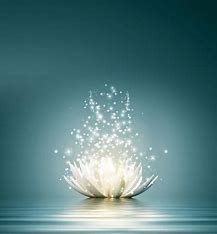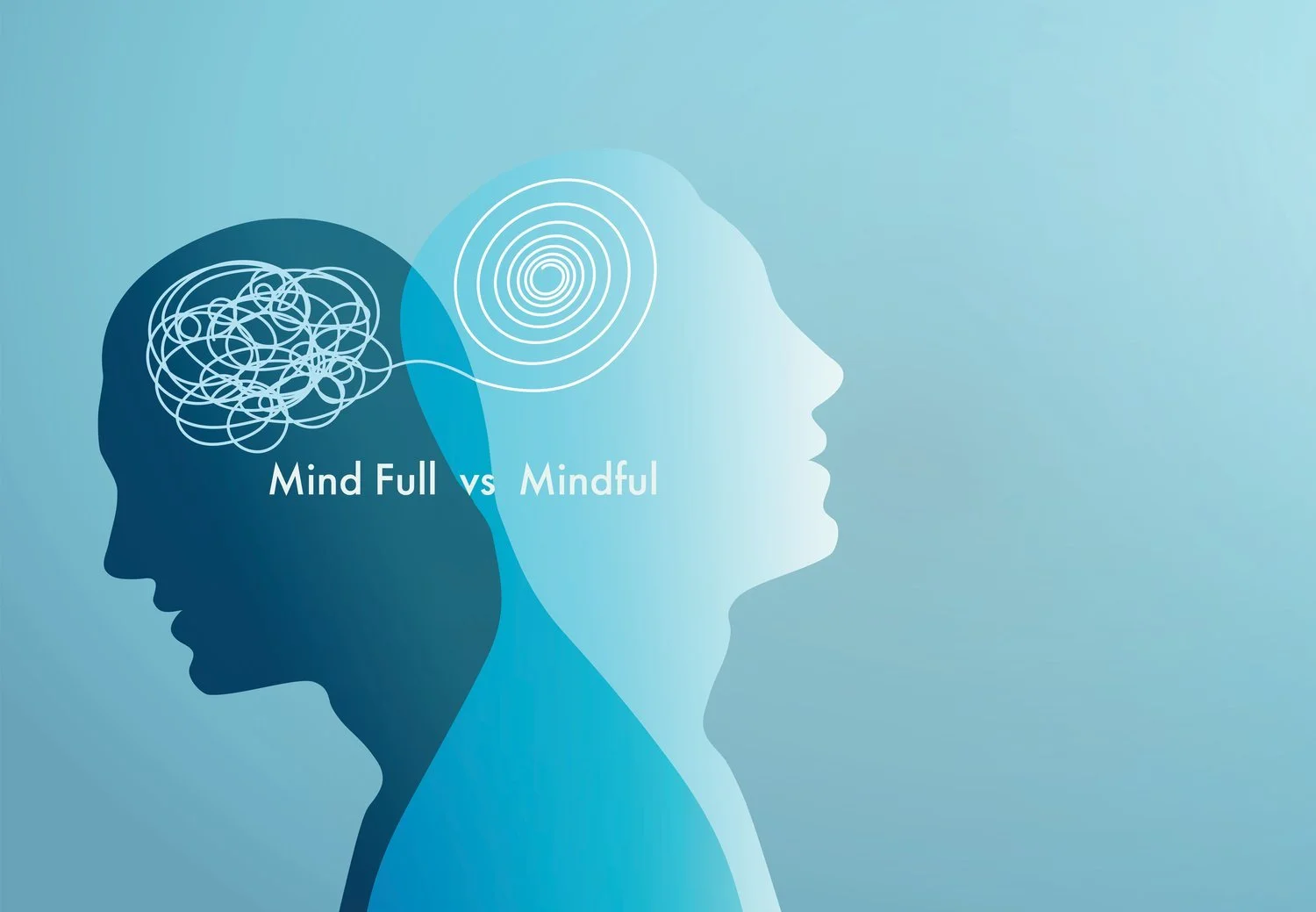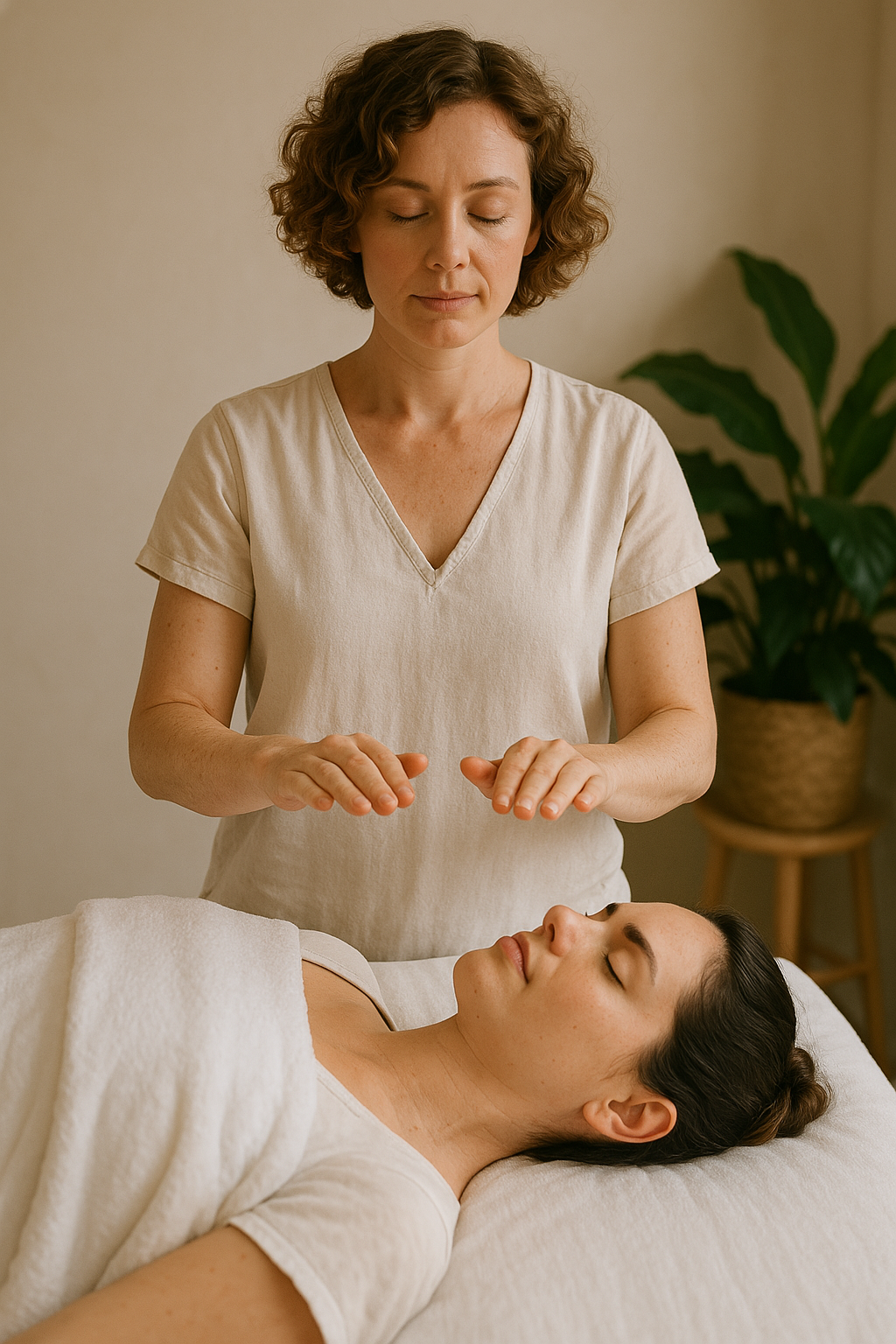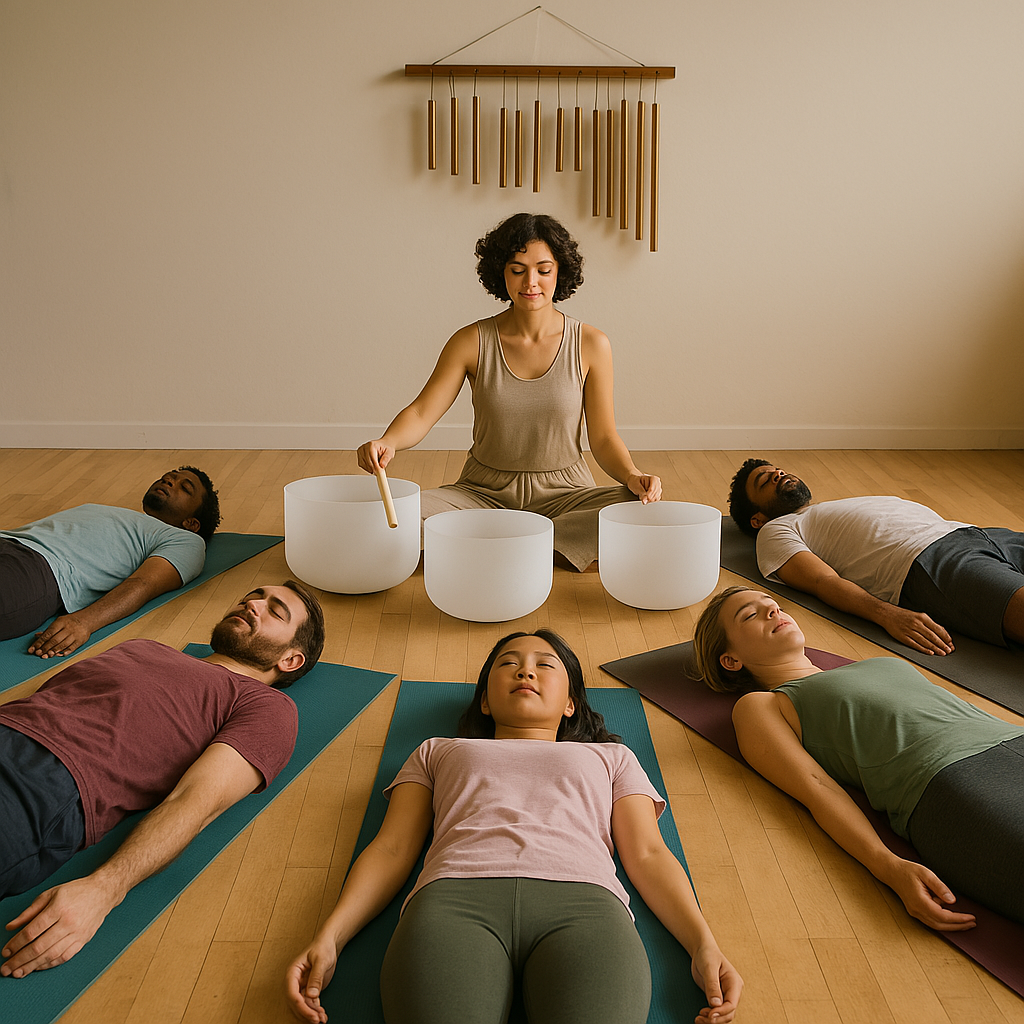
Sound and Energy Therapy and Human Design Coaching in the Canberra Region
What is sound therapy?
Sound healing is an ancient practice that harnesses the vibrational power of sound to promote physical, emotional, and spiritual well-being.
Rooted in traditions such as Tibetan singing bowls, chanting, and modern sound therapy techniques, sound healing works by influencing the body's frequencies and restoring balance. At the core of sound healing is the understanding that everything in the universe, including the human body, vibrates at specific frequencies. When these frequencies become disrupted due to stress, illness, or emotional distress, sound healing can help realign them.
Various methods, such as crystal singing bowls, tingsha bells, and chimes, produce harmonic vibrations that interact with the body's energy centres (chakras), facilitating relaxation and healing.
Scientific research has begun to support the effectiveness of sound healing. Studies suggest that sound vibrations can activate the parasympathetic nervous system, reducing stress and lowering blood pressure. Brainwave entrainment is another key mechanism, where repetitive sound patterns synchronize brain activity, leading to deep meditative states. Sound frequencies have also been found to stimulate cellular healing, improving overall health and well-being.
Many practitioners use sound therapy to address anxiety, pain relief, and emotional blockages. Whether through guided sound baths or personalized vibrational treatments. Sanctuary of Sound offers both individual and group sound therapy in the Canberra region.
Who is sound therapy suitable for?
Absolutely anyone and everyone can benefit from sound therapy. As they say “your vibe attracts your tribe!” Your vibration at any point in time is influenced by your emotional, physical and spiritual health. What you put out to the universe will be mirrored back to you, so it is important to keep your vibration high.
It is easy to keep your vibe high when life is good, but the challenge happens when life throws you curve balls.
llness, prolonged stress, relationship challenges, business or work challenges can all test our resilience and over time, and if not actively addressed will lower your vibration. This can become a downward spiral. Have you ever noticed that once a few things go wrong, more seems to come your way? This is vibration in action, but it doesn’t have to be this way.
Regular sound therapy sessions can help to shift stuck energy from your system and therefore maintain a higher overall vibration. Sanctuary of Sound offers regular sound therapy sessions in the Canberra region.
Sound therapy is particularly useful for:
- individuals with chronic pain or illness (fibromyalgia. arthritis or migraine) find that the soothing sounds of the crystal singing bowls and other instruments help to lower stress levels and promote relaxation, which in turn aids pain perception.
- individuals experiencing stress, anxiety or burnout find that sound therapy offers a grounding practice that encourages mindfulness, deep breathing and nervous system regulation.
- individuals with sleep disorders often find that sound meditations, particularly binaural beats entrain brainwaves to the theta and delta states, helping to reset their circadian rhythms.
- neurodivergent individuals may find that sound therapy offers a safe and structured environment that nurtures sensory integration and emotional regulation.
- First responders or people in high stress occupations.
- Military veterans or current serving officers who have experienced high stress or disturbing situations in their role.
- Full time carers who devote their time to loved ones suffering from an illness or other challenges.
- individuals on a healing or spiritual journey enjoy sound therapy as an entry point into deeper introspection and healing.
- individuals interested in holistic wellness may find immense value in sound therapy as a preventative and nourishing space to recalibrate, find clarity and deepen connection with themselves and others.
If you are in the Canberra region and resonate with one of these groups, reach out and see what sound therapy can do for you.
Is sound therapy unsuitable for anyone?
There are a few groups of people who are urged to use caution before undertaking sound therapy. These include:
- People with pace-makers or defibrillators as the vibration of the bowls may interfere with the technology of the instrument.
- People with any other medical device on the body that operates through frequency may be impacted by sound therapy, particularly sound baths.
- People with metal body parts may vibrate differently to the human body and might cause unusual sensations or discomfort.
_ Some people with hearing aids find sound therapy uncomfortable. Others turn off their hearing aids and some even turn them up!
- Pregnant women are urged to use caution. The foetus develops its hearing within 7-8 weeks and is used to hearing the frequency of its mother. Loud outside noises may disrupt the equilibrium for the foetus. Played very softly and gently, crystal singing bowls could assist a stressed mother to re-balance her emotions.
The importance of silence
Whenever sound therapy is applied it is essential for silence to follow. It is in the silence that the shifts in the physical, emotional and etheric bodies takes place through entrainment.
Frequently asked Questions
What is a sound meditation?
A Sound meditation is a relaxing event that uses sound therapy tools like chimes and crystal singing bowls and meditation combined to help you deeply relax, let go of stress and re-balance your chakras. It helps to shift negative energy from your system and allow you to vibrate at a higher frequency overall. This attracts more positive outcomes into your life as options and outcomes mirror your vibration. Sanctuary of Sound holds regular sound meditations in the Canberra region.
What do I need to bring to a group sound meditation session?
Your comfort is paramount for the session so it is suggested that you bring:
- a yoga mat,
- a pillow for under the head,
- a pillow for under your knees,
- a blanket or throw,
- a water bottle, and
- an eye mask (optional)
Alternatively you may like to sit in the chairs at the venue or bring your own comfortable camp chair.
How often do you hold group sound meditations?
Currently they are being held once per month (or thereabouts) in the Canberra region and all the dates are listed on this website. You can always organise a specific sound meditation if you have your own group (work colleagues, family, community group) and are located in the Canberra region.
I’m worried that I might fall asleep during the sound meditation and snore. What can be done to prevent this from happening?
Some people find that lying on their side or sitting in a chair helps to prevent snoring. However, I would say that the aim is to get you into a deeply meditative state as quickly as possible. That state just before you fall asleep is perfect for your body to receive the greatest benefit from the treatment. For some people the meditation is so relaxing that they do fall asleep and snore. It is nothing to be embarrassed about. It is a safe space to let go and my greatest joy is witnessing the benefit this treatment can provide when you are in that relaxed state. You will certainly gain far more from the treatment in this state that by staying wide awake to ensure you don’t snore.
I’m concerned I might get emotional during a sound therapy or reiki session. Is that a possibility?
Both sound and reiki therapy shift stuck energy from your energetic system. This could show up as gentle tears, slight jerking, feeling dizzy, disconnected from yourself or physical symptoms. This is only a temporary state and confirms that energy has been moved out of your system. I provide a safe space for this to occur in a supported and nurturing environment. An individual session may be more suitable for your first session to help you to feel more comfortable with the modality.
I am a veteran or front -line worker diagnosed with PTSD. Would sound therapy be able to help me?
Sound therapy is an excellent way to help anyone who is feeling stressed, anxious or overwhelmed by past experiences. The soothing sounds of the crystal singing bowls and chimes help you to get into a deeply meditative state quickly and when in that state, the specific frequencies help to shift stuck energy from your body. When you have experienced something traumatic, the emotions you feel often get trapped. By releasing these emotions from your body you will feel lighter and more at ease. Regular sound meditations are held in the Canberra region and I would welcome contact from Veterans groups to discuss bespoke sessions.
What do I need to bring to an individual SoulNar or reiki session?
Just an open mind and yourself! My studio in Royalla is all set up for those sessions.
What if I don’t feel anything during a session?
Everyone responds differently and in their own time to sound therapy. For some, it may take a few sessions to feel the shift in energy. From experience, those that arrive with an open mind and trust the process get the best and quickest outcomes. For me personally, it was my fourth sound meditation as a participant which attracted the greatest shift. I have no doubt that the first 3 helped shift things in order for the bigger shift to take place. There is no right and wrong about what you feel during a session.
How is sound therapy different to listening to songs that I like?
There is value in listening to any type of music that makes you feel good. The added value from sound therapy is that the practitioner uses specific frequencies and techniques to target specific areas of your body to help shift negative energy. The instruments can be placed directly on or near your body to work on specific areas. The vibrations can then have a direct effect on your nervous system, the chakras and your aura helping you to balance your body, mind and spirit.
What is Reiki?
Reiki is a gentle, non-invasive healing practice that originated in Japan in the 20th Century and developed by Mikao Usui. The word “reiki” comes from two Japanese words being Rei meaning “universal” or “spiritual wisdom” and Ki meaning “life force energy”. Together, Reiki refers to spiritually guided life force energy that flows through all living things. Usui introduced a set of guiding principles known as the reiki ideals, which encourage mindfulness, gratitude and compassion.
In essence, Reiki is based on the belief that when our life force energy is low or blocked, we are more likely to feel stress or become ill. By restoring the natural flow of this energy, Reiki aims to support the body’s innate ability to heal itself - physically, emotionally, mentally and spiritually.
A Reiki session involves a practitioner placing their hands lightly on or just above the recipient’s body in a series of positions. The recipient remains fully clothed and may experience sensations such as warmth, tingling, deep relaxation or glowing radiance around them.
Reiki is not a religion and does not require any specific belief system. It is used either on its own or alongside other medical treatments or holistic modalities to reduce stress, ease pain and promote overall well-being. It is particularly effective when coupled with sound therapy.
Reiki is a simple yet profound practice that invites stillness, nurtures healing and reconnects us with the subtle energy that animates life.
Sanctuary of Sound conducts reiki sessions in the Canberra region.
What is Human design?
In essence, Human Design is a tool for self-awareness—one that invites you to live in alignment with your true nature, rather than who you think you should be.
Human Design is a modern system of self-discovery that weaves together ancient wisdom and contemporary science to offer a personalized map of how we’re energetically wired. Developed by Ra Uru Hu in 1987 following what he described as a mystical experience, the system draws from astrology, the I Ching, the Kabbalah, the chakra system, and quantum physics.
At its core, Human Design proposes that each person has a unique energetic blueprint, known as a BodyGraph. This chart is calculated using your birth date, time, and place—similar to an astrological natal chart—and reveals how energy flows through your system. It highlights your strengths, decision-making style, and how you interact with the world around you.
The system categorizes people into five main energy types: Manifestors, Generators, Manifesting Generators, Projectors, and Reflectors. Each type has a distinct way of engaging with life and a corresponding strategy for making aligned decisions.
Human Design also identifies nine energy centers—some defined (consistent) and others open (variable)—which influence how you process emotions, ideas, and experiences.
These centers are connected by channels and gates, derived from the 64 hexagrams of the I Ching, offering further nuance to your design.
Unlike belief-based systems, Human Design encourages experimentation. It’s not about adopting a new identity, but rather deconditioning from societal expectations and learning to trust your inner authority. When lived authentically, it promises a life of greater ease, fulfillment, and self-acceptance.
Face to face sessions are held in in the Canberra region or via zoom to anywhere in the world.
Meet the Owner
Hi, I’m Sue Smith, the owner and creator of Sanctuary of Sound.
I have a background in education, coaching and human resources and have worked in a variety of settings during my career including High School Teaching, managing a commercial Music School, and roles in the public sector in Education, Coaching. Leadership Development and Training.
Throughout my career, I have always had an interest in energy therapy and the metaphysical and spent some of my spare time researching the many topics making up this genre. In 2022, after being diagnosed with burnout, chronic fatigue and fibromyalgia and the associated anxiety and depression that comes with that, I started exploring all options to improve my health and prioritised research on alternative therapies.
I discovered sound therapy in 2022 and was immediately drawn to the angelic sounds of the crystal singing bowls, chimes and bells. These tools became a very big part of the management of my symptoms and my recovery and I realized that I wanted to use these tools to help others prevent disease and/or to help manage the symptoms if it had already occurred.
I completed a range of sound therapy courses and research and collaborated with a colleague to provide group sound baths to the public. The feedback from participants was very positive and I have since added Reiki Practitioner, and Soulnar Sound and Energy Therapist qualifications to my toolkit.
Sound and energy therapy has assisted me to improve my overall wellbeing and helped me so much. I look forward to sharing this beautiful therapy with clients to help improve their overall wellbeing.
My interest in coaching has never waivered and during my recovery I have discovered a new methodology that helps us all to understand ourselves better and live a more fulfilling life. I have recently completed training as a human design coach and am pleased to add this to my repertoire. This methodology combines ancient wisdom to provide a range of data to help us live as we are designed and not as we have been conditioned to be.
You may be wondering what this has to do with sound therapy! During the years as I have been coaching people, I was always fascinated and a little concerned with how some people just got stuck and couldn’t quite attain their goals. It was like something invisible was holding them back. I have come to realise that it is the buried emotions and subconscious beliefs that hold people back.
The sound therapy helps to shift those negative energies from the body in a gentle and non-confrontational way making way for people to then move toward living their full potential. For me, the combination of sound and coaching is a useful match to assist people to live a healthy and fulfilling life. I look forward to sharing both modalities with clients.













